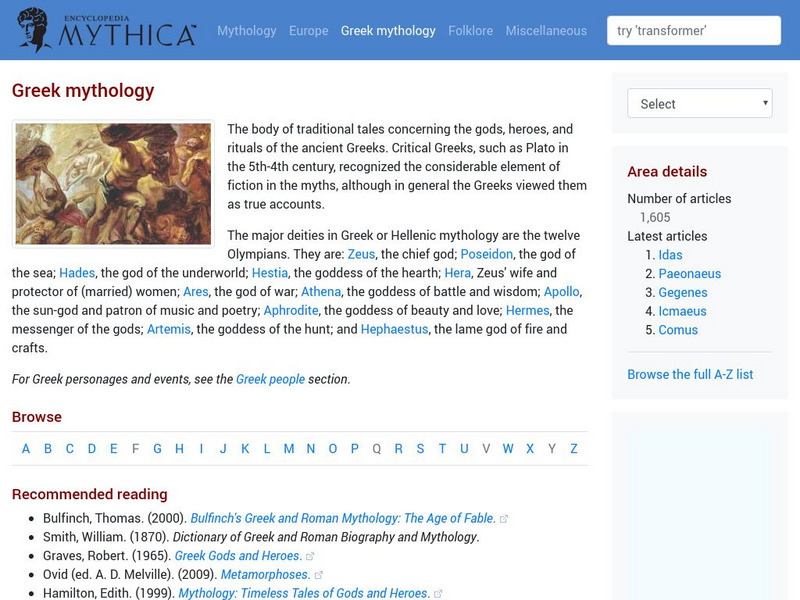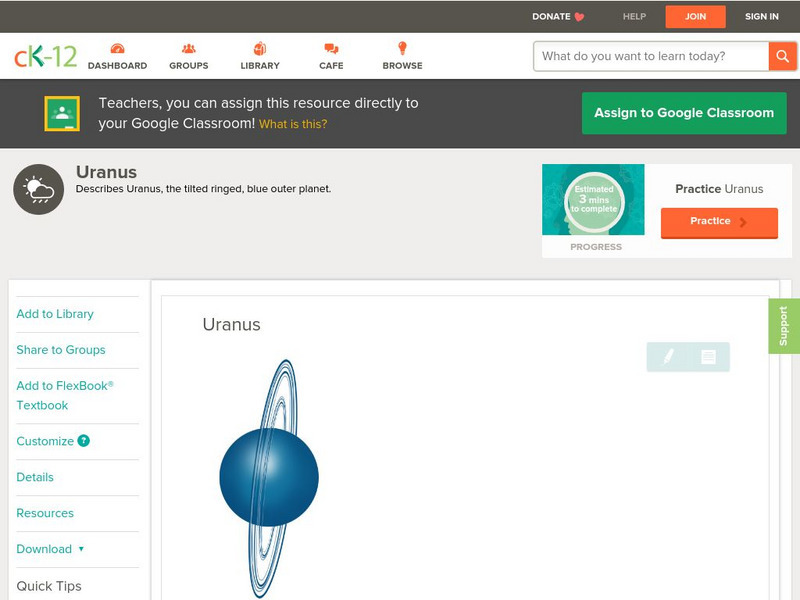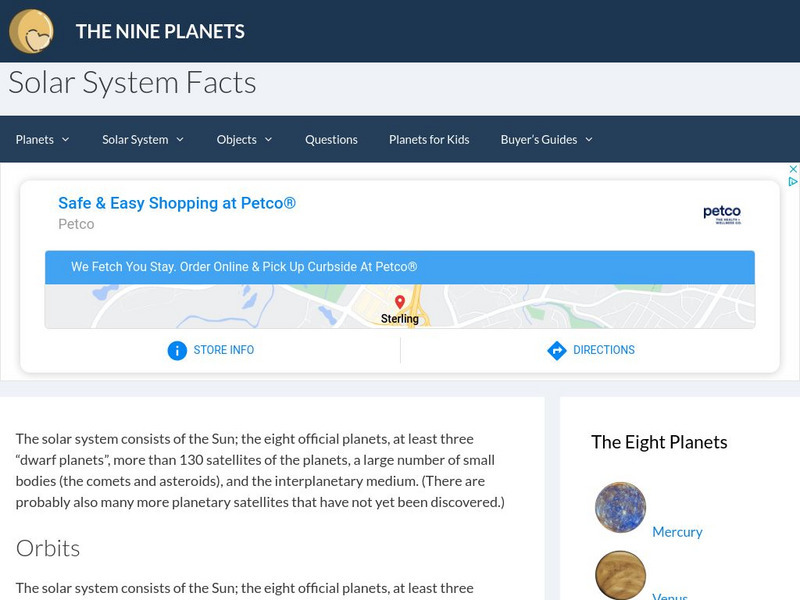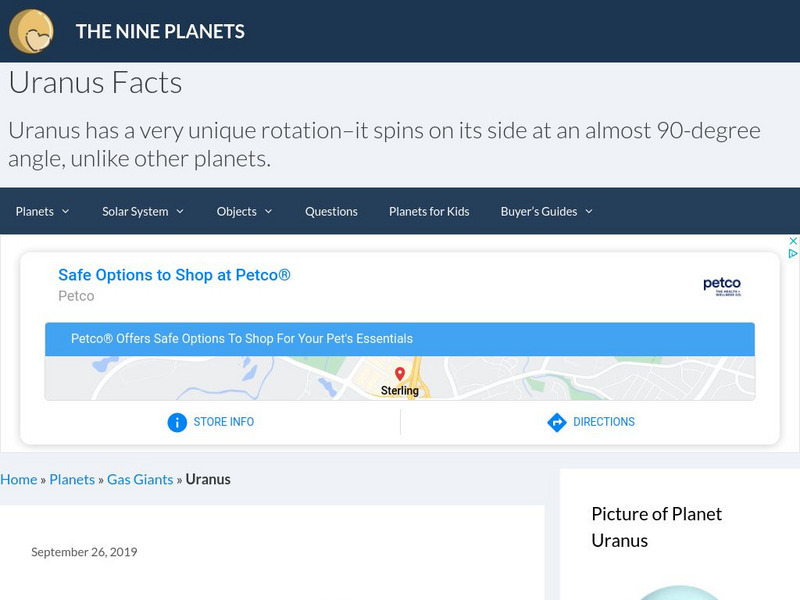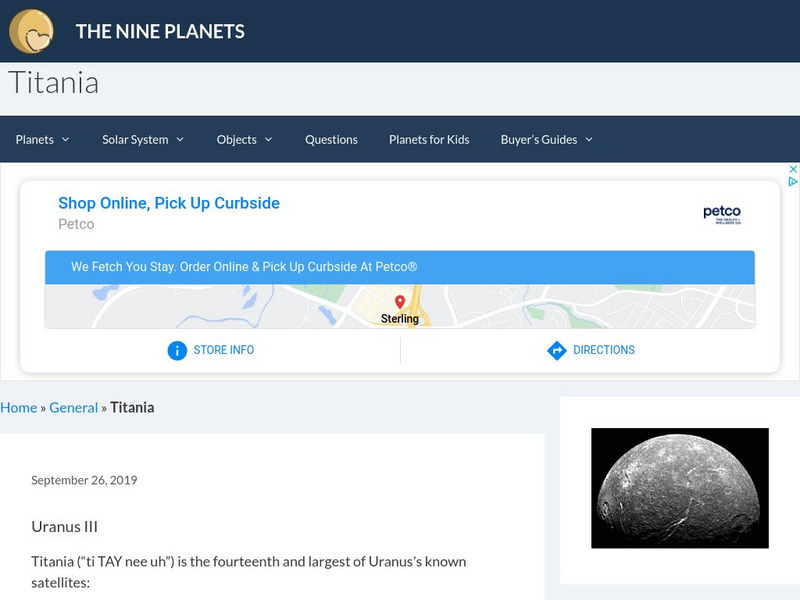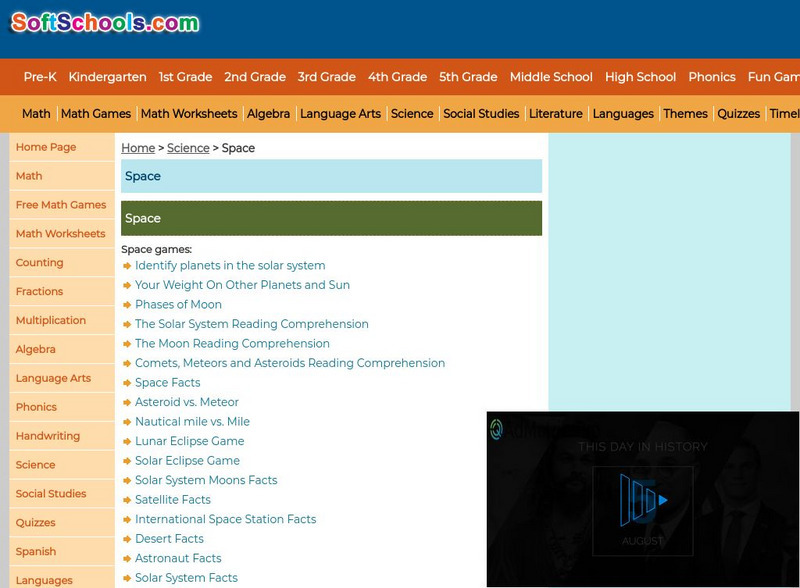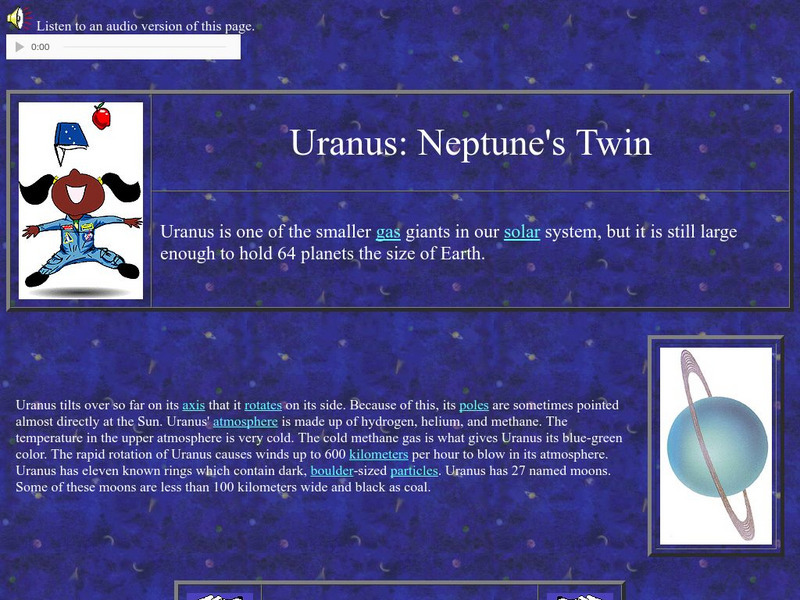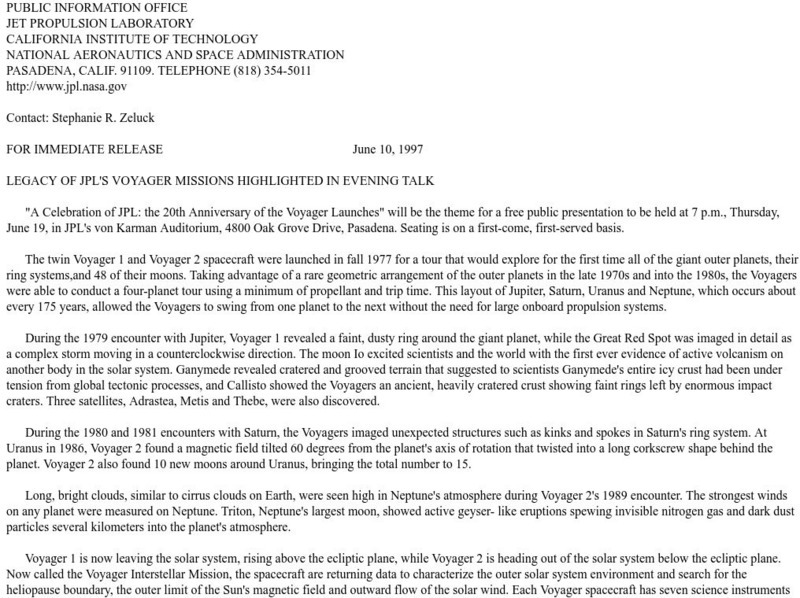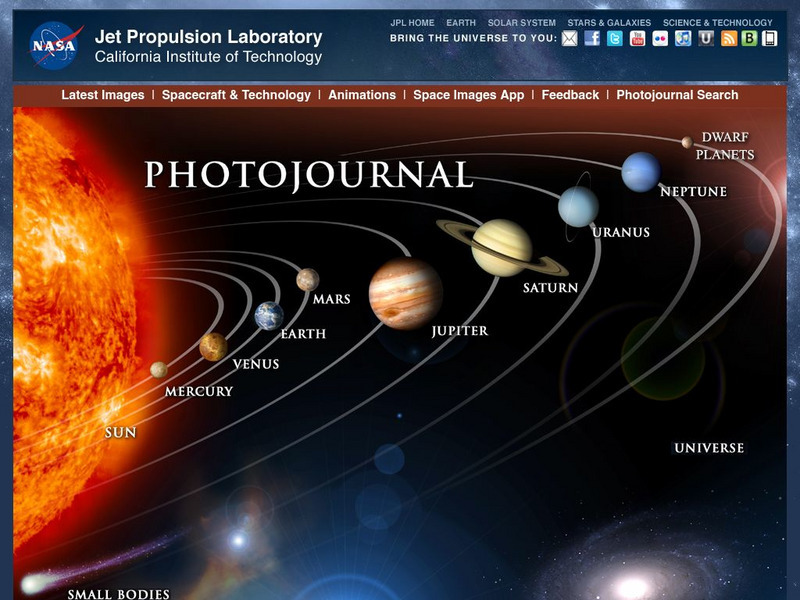Scholastic
Scholastic: Study Jams! Science: Our Solar System: Outer Planets
A slideshow and a short multiple-choice quiz on the four outer planets of our solar system, which include Jupiter, Saturn, Uranus, and Neptune.
Encyclopedia Mythica
Encyclopedia Mythica: Greek Mythology
Encyclopedia Mythica offers a comprehensive resource on Greek mythology. Content includes a look at the principal gods, Zeus's consorts and offspring, the descendants of Prometheus, and much, much more. Click on "browse articles" for a...
NASA
Nasa: Astronomy Picture of the Day: Uranus's Moon Umbriel
Brief overview of Umbriel from NASA. Answers the question "why is the moon so dark"? Provides additional links for more information. A NASA picture of the day.
NASA
Nasa: Astronomy Picture of the Day: Titania, Uranus's Largest Moon
A brief overview of Titania, Uranus's largest moon. Includes a very good description of the moon's surface. A NASA picture of the day.
CK-12 Foundation
Ck 12: Earth Science: Uranus
[Free Registration/Login may be required to access all resource tools.] Describes the features of Uranus.
CK-12 Foundation
Ck 12: Earth Science: Uranus
[Free Registration/Login may be required to access all resource tools.] Describes the features of Uranus.
NASA
Nasa: Huge Springtime Storms Hit the Planet Uranus
Describes in detail the devastating storms that occur on Uranus.Also includes an .mpeg movie showing the rings of Uranus up close. (Mar. 29, 1999)
Famous Scientists
Famous Scientists: William Herschel
Learn about the life and work of William Herschel, and find out about his telescope coinstruction and solar system reserach.
NASA
Nasa Space Science Data Archive: The Voyagers
This web page contains information about the Voyager and the Voyager II. The page explains that the Voyagers were designed to go beyond our solar system. The page also contains scientific results of regarding the Voyager mission.
TeachEngineering
Teach Engineering: The Outer Planets
Students explore the outermost planets of our solar system: Saturn, Uranus and Neptune. They also learn about characteristics of Pluto and its interactions with Neptune. Students learn a little about the history of space travel as well...
NASA
Nasa: Space Place: Messenger: Planet Mass Comparison
Compare the masses of planets in this interactive animation. Simply pile a number of Earths on one side of the scale, to balance with the mass of one Jupiter. Then try this with all the planets.
Nine Planets
The Nine Planets: An Overview of the Solar System
A detailed overview of the history, mythology, and current scientific knowledge of each of the planets and moons in the solar system.
Nine Planets
The Nine Planets: Asteroids
A plethora of information about Asteroids. This site provides lots of in-text links to information, pictures of asteroids, a table full of information about asteroids, as well as links to more information about asteroids.
Read Works
Read Works: What's Up in Space?
[Free Registration/Login Required] An informational text about outer space. A question sheet is available to help students build skills in reading comprehension.
Nine Planets
The Nine Planets: Uranus
An excellent report on the planet Uranus. The site includes detailed information about the planet as well as links to information about Uranus moons, unmanned probes sent to explore Uranus, and an extensive set of images of the planet.
Nine Planets
The Nine Planets: Titania
A general overview of Uranus's largest moon, Titania. Includes a picture and additional links to other sites for more detailed information, making this a great site to check out on the subject.
Soft Schools
Soft Schools: Space: Solar System Interactives
Identify the planets in our solar system and discover how much you weigh on another planet with these space interactives.
NASA
Nasa Star Child: Uranus, Neptune's Twin (Level 1)
Get to know the twin of Neptune with this introduction to Uranus. Listen to the information in an audio file. Features include a printable version of the page, and vocabulary words are linked to a glossary of terms.
A&E Television
History.com: The Space Race: Interactive Universe
A virtual journey through space offers photos and facts about Earth and its neighboring planets, comets, other celestial bodies of the Solar System, and the Milky Way and Andromeda galaxies.
NASA
Nasa Star Child: Star Child
StarChild from NASA defines and describes the Solar System in a simple and easy-to-understand manner. The website is broken down into two versions for the student, grade school and junior high.
Other
The Apollo Society: The Solar System
Contains a small set of images of solar system objects and a series of links to information about all solar system objects. Solar System Tours link to excellent image collections.
NASA
Nasa: Celebrating Voyager 1 & 2
This press release contains information about the Voyager and its history. The page gives facts about the past twenty years with the Voyager and all of its accomplishments.
NASA
Nasa: Planetary Photojournal
This NASA site provides access to publicly released images from various Solar System exploration programs.
NASA
Nasa: Planetary Data Sytem: Welcome to the Planets
Collection of images, with vocalized explanatory captions, of the planets acquired by NASA as part of its exploratory space programs.



